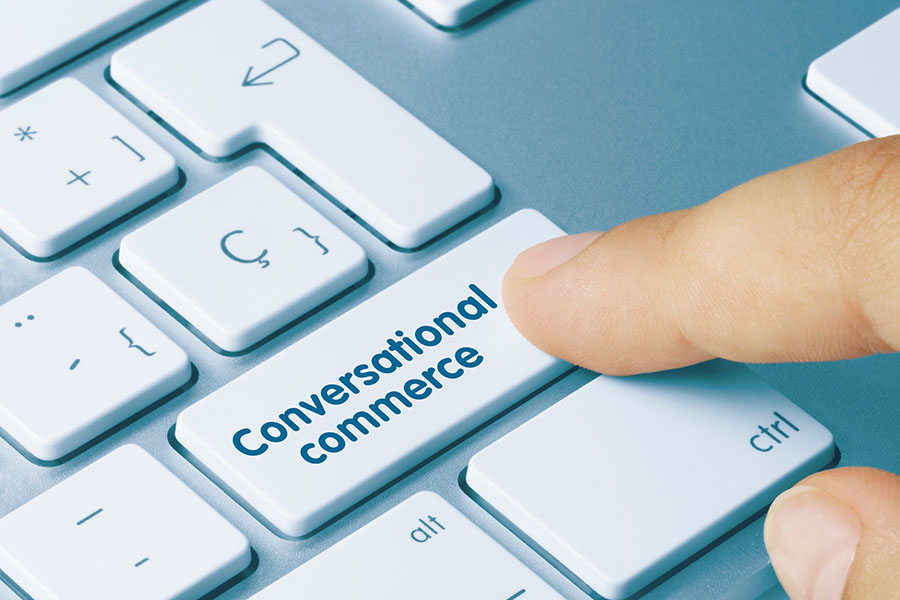
A sure sign of ecommerce growth is increased sales. It’s way easier to achieve (and is better down the road) than reducing costs or raising prices to increase store revenue.
Increasing ecommerce sales boils down to two main strategies:
- Providing a better shopping experience for shoppers—making the online shopping experience more convenient and rewarding for customers
- Regular evaluation and audit of ecommerce store elements—testing your website to maximize visitor engagement and purchasing
Learn how to increase ecommerce sales by reading our recommended tips below. These ecommerce sales strategies will go a long way toward bringing in greater profits and more customers.
1. Implement a Comprehensive Marketing Strategy
A comprehensive ecommerce marketing strategy uses different content formats to build brand awareness. The more potential buyers are aware of the products and services you offer, the more chances they will flock to your ecommerce space.
A holistic approach to marketing means:
- Creating general content: General content refers to content that all visitors can access, including blog posts, what-is and how-to guides, podcasts, videos, and newsletters about topics for which your brand offers expertise.
- Crafting more personalized messages: Personalized content could mean more exclusive content for VIP customers, follow-up emails for regular buyers, birthday messages, and targeted promos and deals. Offering these extra rewards to loyal online buyers can encourage regular customers to purchase more frequently and entice fence-sitters to become online shoppers.
Don’t underestimate the power of personalization: In 2022, a third of US consumers said they might stop using a brand if it did not personalize their customer experience, and 16% said they would definitely stop.
When it comes to marketing, ensure you also stay on top of trends. For example, social media is the new search and checkout counter and a way to reach more customers via avenues like influencer marketing. Other options include email and text message marketing, for which many point-of-sale and ecommerce software have built-in tools.
2. Test & Improve Sales Funnels
Small adjustments to almost any aspect of your sales funnel—from your website’s landing page to your product pages—can yield measurably different results in terms of conversions and spending. You won’t know what works best until you test everything…So test everything!
The simplest way to do this is via A/B testing. This involves presenting buyers or website visitors with two different versions of something (such as small variations of website design or “buy now” buttons) and monitoring visitor activity to see which version gets more engagement or conversions.
A/B testing can be used for something as simple – but impactful – as the subject line of an email message. (Source: SendX)
You can use A/B testing for almost any element of design or customer experience, including blog post content or formatting, product images and descriptions, email marketing, and more. You can also test the same element multiple times until you settle on a design that truly maximizes engagement.
3. Reduce Cart Abandonment
Cart abandonment is when an online shopper in your ecommerce store is about to buy your products but decides to cancel the purchase for reasons such as a complicated or frustrating checkout process or an unexpected signup requirement. This happens more than you might think: the average worldwide cart abandonment rate sits at an alarming 73%.
Shoppers abandoning their carts can be a nightmare scenario for your business not only because you miss out on potential sales but also because the customer will have had a negative experience with your store and will be unlikely to return. They may even complain to others about the experience, driving away other potential customers.
You can reduce cart abandonment and maybe even recover wavering customers with some simple tactics. Improving your checkout process and including a guest checkout feature so that buyers don’t have to create an account just to purchase some items are some examples. If you detect customer cart abandonment, you might also be able to recover the sale (or at least some of the customer’s goodwill) by offering free or reduced shipping, or item prices.
4. Utilize Cross-selling & Upselling
When you encourage shoppers to buy additional products that complement or enhance the item they had already decided to buy, that’s called cross-selling. This not only nets you a bigger sale but also feels like a win for the customer, who will be getting a better or more complete purchase than they otherwise might have. A widely cited statistic says that cross-selling can boost sales by up to 20%.
Use cross-selling in your online store by displaying related items alongside high-value products, creating scarcity to make people think about buying complementary items while they still can, and reducing buyers’ mental load by offering pre-designed product bundles.
With upselling, instead of encouraging customers to buy complementary or additional products, you convince them to buy a more expensive and higher-end version of the item they were already going to purchase. Instead of going for a greater quantity of sales as you would with cross-selling, upselling gets you a bigger single sale. In both cases, the result is the same: greater sale value.
5. Create a Frictionless Checkout
If people are shopping online, it’s a safe bet that they’re looking for convenience—they want to buy something easily whenever they want and wherever they are. Lean into this by making your ecommerce store experience as smooth and seamless as possible for online shoppers.
Website navigation, checkout, and sign-ups should be as painless as possible for potential customers. Ensure that your ecommerce store is well-organized with menus, filters, and quick links so visitors can navigate easily and quickly find what they want. “Buy Now” and “Proceed to Checkout” buttons should always be visible as the customer is scrolling through your products. Once they decide to purchase, make it easy via methods like one-click checkout.
6. Provide Multiple Payment Options
Another concrete ecommerce sales strategy to increase convenience for online shoppers is offering various ways to pay for purchases. It would be a frustrating experience for a customer to be ready and willing to buy something, only to find out that your ecommerce store can’t accept their preferred payment method.
Make sure your online store is set up to accept credit and debit card payments, bank transfers, mobile payments, buy now, pay later (BNPL), and digital wallets like Google Pay and Apple Pay. This last one is critical: by 2027, it is projected that 52% of online shoppers in the US will prefer paying via digital or mobile wallets.
7. Diversify Your Sales Channels
Offering your ecommerce products on additional sales channels will get your items in front of more eyes—which means more wallets will open. Aside from your online store, get your products displayed on marketplace platforms (including social media sites) and dedicated traditional marketplaces like Amazon and eBay. These sites incorporate features and design principles that make it easy for visitors to shop.
You can also explore mobile commerce channels, enabling customers to shop your products via smartphone apps or your social media page.
8. Offer a Loyalty Rewards Program
If customers experience a seamless and pleasant checkout experience in your online store and receive the items they paid for, they’ll be happy enough with your business. But they’d be even happier to know that they could get some extra rewards if they buy more and stay loyal to your brand.
A loyalty program essentially provides additional benefits to a customer if they buy regularly from your business. For example, long-term buyers can become eligible for discounts, exclusive deals and offers, freebies, store credit, or gift cards.
As customers’ annual spending goes up, you can offer increasing rewards such as early or special access, discounts, VIP treatment, product bundles, or free items. (Source: Lively)
Once you create a customer loyalty program and make ecommerce buyers aware of it via outreach marketing, both regular and new customers will be attracted to your offering because they know they’ll get rewards for buying consistently.
Social proof can be as simple as positive reviews and testimonials from happy customers. User-generated content (UGC) can also include recommendations and image and video posts on social media.
If people visiting your online store are thinking about buying something but are hesitant to commit to the purchase, reading about other customers’ positive experiences can push them over the edge and get them to buy.
Have a dedicated space to display social proof on your ecommerce site, like this retailer. (Source: MVMT)
So, encourage happy customers to leave testimonials and positive reviews about your business. This type of good feedback has a larger impact than you may believe: half of the survey respondents say they would trust consumer reviews as much as personal recommendations from friends and family.
10. Stay on Top of Ecommerce Customer Service
Just because neither you nor your customers are physically present in an online store, this doesn’t mean you can slack on customer service. Visitors browsing your product catalogs may still have questions, and they’ll want answers quickly. You’ll need to be ready to respond to this need.
You can offer email support, but customers will get a better impression from live chat or phone support—even better if you can offer it 24/7. Be sure to respond to any queries promptly. If your customer assistance is always fast and helpful, customers are more likely to return in the future.
Ecommerce chatbots are one way to respond to this need. However, be aware that some customers may prefer talking to a live customer service staff member. Other simple ways to improve customer support include building a Frequently Asked Questions (FAQ) page and a Contact page with your business’ details.
11. Regularly Conduct Market Research
When you started your retail business, you probably envisioned the ideal customers who would be buying your products online and tailored your lead generation and marketing strategies to them—in other words, you probably created a customer persona.
It’s never a bad idea to revisit this persona. Start by performing audience research via online groups, threads, and forums related to your industry or the products you sell online. Learn what buyers like, dislike, and wish for.
And don’t discount the effectiveness of getting direct feedback from your customers. You can gather this feedback via surveys, ratings and reviews, behavioral data (which you can measure via sales reports or dedicated software), and customer support calls. Gathering this feedback and adjusting your strategies accordingly will go a long way toward improving your online sales funnel.
12. Implement Search Engine Optimization
Search engine optimization (SEO) involves researching and including effective keywords, organizing your website, building links, and using the right kind of content marketing—all with the goal of improving the performance of your website or online store in search engine results. Implementing good ecommerce SEO is crucial because even if you’re selling great products, this won’t matter if nobody ever finds and visits your site.
Part of SEO is keyword research: finding the search terms that your potential customers are using, and incorporating these into your ecommerce store webpages. (Source: SpyFu)
13. Consider Paid Advertising
If you want to add to all the organic measures you’re taking to improve ecommerce sales—optimizing webpages, making things more convenient for customers, using reviews and testimonials—you can consider using paid advertising to give your online sales a boost. In essence, this involves paying to have your advertisements displayed to audiences on platforms like search engines, social media networks, or other websites.
When using paid advertising, treat the process as you would free or organic advertising: clarify your specific target audience, determine the most effective type of advertising to use, measure your results (traffic and conversions), and make adjustments as needed. Opt-in email marketing, where you use a paid platform to send permission-based email blasts to contacts and prospects, is another option.
Factors That Influence Ecommerce Sales
While the tactics listed above will help increase your ecommerce sales, it’s also helpful to explore some factors that can affect online sales, either positively or negatively:
Pricing
With both online and in-person selling, pricing is a key factor in determining how well your ecommerce products perform. Pricing towards either extreme will be a detriment to your sales; too expensive means lower sales and conversion rates, and too cheap means smaller profit margins and possibly even a negative reputation for your business in the long term.
Setting the optimal price for your online products involves calculating costs and potential profits, as well as knowing your target audience well.
Customer Experience
A customer’s overall online experience with your business starts from the moment they visit your website until they leave, including any purchases they made, impressions they got, reviews and feedback they left, the quality of customer service they received, and whether they want to visit again.
If your online store is well-designed, the shopping and checkout process is convenient and painless, and your staff is trained to assist customers, visitors will have a much better experience and are more likely to come back and buy again.
Return Policy
As with brick-and-mortar product sales, you’ll need to come up with a return policy in case online customers are unhappy with their purchases and want to refund or replace them. Writing a return policy involves setting the terms and conditions under which you’ll permit a refund, replacement, or exchange. The terms and allowances that customers prefer might not be entirely aligned with the ones you’d like as a retailer, so you’ll need to strike the right balance when creating the policy.
If you get the balance right, you’ll be able to address customer complaints in a way that doesn’t reduce your long-term profits, keeps customers happy, and encourages them to stay with your brand—thus increasing your online sales.
Shipping Policy
The more your business focuses on ecommerce sales, the more crucial it is to develop a solid shipping policy that will get products into your customers’ hands with as little hassle and difficulty as possible. A good, results-oriented shipping policy can set you apart from competitors and make your buyers more loyal—and more willing to spend.
A comprehensive ecommerce shipping policy will cover delivery methods, packing and handling, tracking, and more. As mentioned earlier, you can also choose to offer free shipping—without missing out on profits.
Frequently Asked Questions (FAQs)
Click through the following sections to learn more about why you need an ecommerce store and the factors and tactics that affect online sales.
Having multiple sales channels for your business will yield the best results. Having an ecommerce store in addition to a brick-and-mortar store means more people will see and buy your products.
There are many tactics you can use, but the general principles are to make the online shopping experience as easy and convenient as possible for your customers and to test every element of your website to optimize for maximum visitor engagement.
Some factors that affect ecommerce sales include pricing, customer experience (including checkout and support), and return and shipping policies. Your ecommerce site’s visibility and reputation among existing customers can also influence sales.
Bottom Line
Improving your online sales performance not only helps your bottom line, it also proves that your products are good and your business has the potential to grow. Increase your ecommerce sales by using a comprehensive marketing strategy, keeping abreast of trends, rewarding your customers for sticking around, and making things easy for them. Stay consistent with these tactics, and your online sales will get a boost before long.




![how-to-import-from-china-to-the-us-in-6-steps-[2024]](https://zabollah.com/wp-content/uploads/2024/04/14484-how-to-import-from-china-to-the-us-in-6-steps-2024.jpeg)
